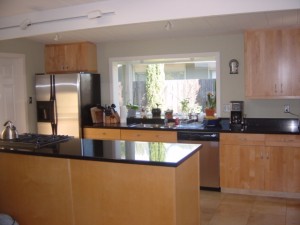 Over 50% of the houses sold in the Orlando market as a whole have been cash deals, according to ZILLOW. ZILLOW’s research attributes most of these sales to investors who’ve purchased homes in typically in poor condition. Generally these houses were bought under market value and renovated to resell quickly – or “flip” – for a profit. Usually, the focus of renovations is interior finishes and fixtures: fresh paint and new flooring, and updates to kitchens and bathrooms. Investors put their money where it shows, and where they expect to get high return on their investment. This sometimes means that they’ve ignored not-so-glamorous, but important components like roofing, HVAC systems, and water heaters. And, to keep their costs down, they often hire handymen to do the work rather than hire licensed contractors. Not all flipper houses are problematic, but potential buyers may find that everything looks great on a walk-through only to have their home inspection reveal costly issues after the sales contract is signed. Here are a few things to look for when going on a walk-through evaluating an investor-renovated house:
Over 50% of the houses sold in the Orlando market as a whole have been cash deals, according to ZILLOW. ZILLOW’s research attributes most of these sales to investors who’ve purchased homes in typically in poor condition. Generally these houses were bought under market value and renovated to resell quickly – or “flip” – for a profit. Usually, the focus of renovations is interior finishes and fixtures: fresh paint and new flooring, and updates to kitchens and bathrooms. Investors put their money where it shows, and where they expect to get high return on their investment. This sometimes means that they’ve ignored not-so-glamorous, but important components like roofing, HVAC systems, and water heaters. And, to keep their costs down, they often hire handymen to do the work rather than hire licensed contractors. Not all flipper houses are problematic, but potential buyers may find that everything looks great on a walk-through only to have their home inspection reveal costly issues after the sales contract is signed. Here are a few things to look for when going on a walk-through evaluating an investor-renovated house:
- Bathroom tile that has been painted over. It looks good now, but the paint will begin to peel shortly after you move in.
- New bathroom vanity that is not attached to the wall. This is a safety hazard that can lead to plumbing problems.
- Roof that has been pressure washed to look newer than it is. This cosmetic improvement actually shortens the life of the roof.
- Ancient water heater and air conditioning system. In addition to potential repair or replacement costs, you may soon find your electric bills are shockingly high due to appliance inefficiency.
- No electric receptacle in the bathroom. Older homes had a receptacle in the base of the light over the sink, but new bathroom light fixtures don’t have them – leaving you a bathroom with no place to plug in anything.
- Older garage door. Perhaps it is spray painted, but in poor mechanical condition or the automatic opener is outdated and lacks proper safety features.
- New interior doors. Check that they latch and properly stay open.
- Laminate wood flooring. Look for buckling, a sure sign it’s installed too tightly.
- Newly enclosed porch or garage. Look for air conditioning vents in the ceiling.
After the walk-through, introduce yourself to the neighbors. They are a great resource and can share the home’s history, the condition it was in before renovation, how long it was unoccupied. If you remain interested in the house, check with the local building department online or in-person to confirm that the repairs and improvements were done under a building permit with a final inspection. And, it’s especially important to get a professional home inspection on an investor renovated house. The inspector will delve deeper into the home’s condition, opening the electric panel to examine the wiring, walking the roof, checking out the attic, testing the HVAC and appliances, operating the doors and windows, and evaluating multiple other components. Find out what’s under all those sparkling new finishes before you buy. A professionally renovated older house can be both a good buy for you and a profitable investment for the renovator, but not all “flip” houses are as wonderful as they first appear to be. All too often, a flipper house is “granite counter tops and a bad roof” – and it’s definitely buyer beware!
Read More
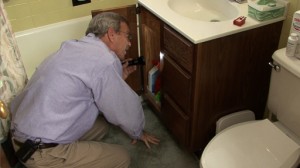 Founder Tommy Joynes’ philosophy is that BUY YOUR SIDE inspects every home as if his mama was going to live in it. Delivering on that promise means we pay attention to the details and give you an objective report about the condition of the property.
Founder Tommy Joynes’ philosophy is that BUY YOUR SIDE inspects every home as if his mama was going to live in it. Delivering on that promise means we pay attention to the details and give you an objective report about the condition of the property.
One of the key points we watch for is moisture intrusion. It can be the cause of building defects and cause health issues for the building’s occupants. Like most locales in the southeast, Osceola County properties are challenged with moisture intrusion, largely driven by high outdoor humidity and low indoor temperatures during summer months.
Some common moisture-related problems include:
- Structural wood decay
- High indoor humidity and resulting condensation
- Expansive soil, which may crack the foundation through changes in volume, or softened soil, which may lose its ability to support an overlying structure
- Undermined foundations
- Metal corrosion
- Mold growth
BUY YOUR SIDE checks for moisture intrusion in these key areas: roof, attic, plumbing, bathrooms and utility room.
Roof: The most frequent causes of moisture infiltration at the roof are consolidation of vent stacks below the roof; exhaust fan caps routed through walls instead of the roof; and missing, incorrectly installed or corroded flashing pipes. A roof leak may lead to the growth of mold colonies in the attic that can grow unnoticed.
Attic: Here we look for stains or discolorations and wetness, a musty smell and visible signs of mold at all roof penetrations. Chimneys, plumbing vents and skylight wells are common places where moisture may pass through the roof. Any such locations must be inspected for.
Plumbing: Most plumbing is hidden in the walls, so serious problems can begin unnoticed. Distribution pipes and plumbing fixtures can be the source of large amounts of moisture intrusion. If the wall is moist or discolored, then moisture damage is already in progress.
Bathrooms: One of the most important means of moisture management in the bathroom is an exhaust fan, which should vent into the exterior, not into the attic, to prevent overloading the bathroom with damp air. We check the sink in every bathroom, assuring that overflow drains are not corroded and allowing water to enter the cabinet, and showers/tubs to note if caulk and grout are properly installed to avoid channeling water to vulnerable areas.
Utility Room: The biggest contributor to moisture infiltration in the room is the water heater. The tank should be clean and rust-free and the area around it (and the water softener) should be clean and dry. Here we also confirm that through-the-wall penetrations for fuel lines, ducts, and electrical systems are well-sealed, clean and dust-free.
Foundation slab, windows and doors are also inspected for soundness against moisture infiltration.
At BUY YOUR SIDE, our goal is to give you the good news about what is properly maintained and provide a checklist of potential issues so you can make informed decisions. We inspect both residential and commercial properties. We welcome any questions you may have about the inspection process. Give us a call at 407.780.0911 or contact us here: http://bit.ly/UnNmwk
Read More
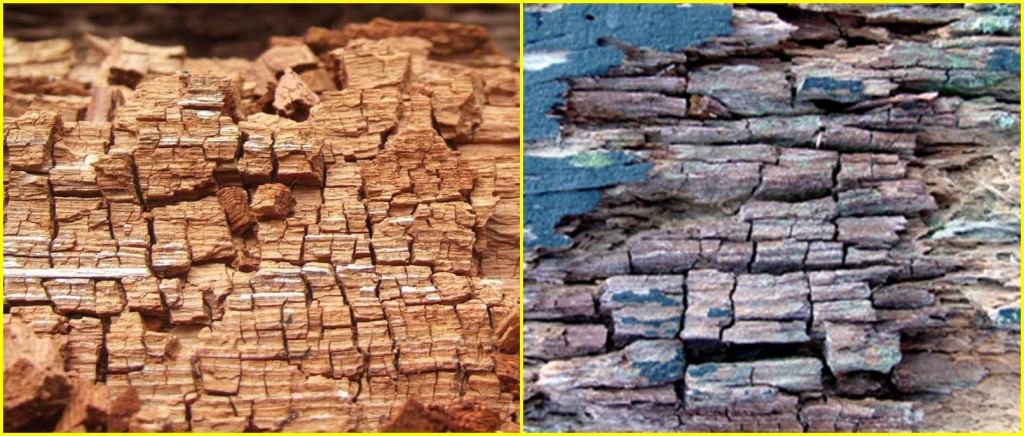 Yes, you read that right: dry rot is responsible for about $17 BILLION in property damage each year throughout the United States. And Osceola County properties are as susceptible as any others in the US.
Yes, you read that right: dry rot is responsible for about $17 BILLION in property damage each year throughout the United States. And Osceola County properties are as susceptible as any others in the US.
Although dry rot is not the most common type of rot in Osceola County, it can deal serious damage to your home and endure conditions that are too dry for other types of wood rot to thrive.
Dry rot is so insidious, that 75% of wood’s toughness is possible with only a 1% decrease in the weight of the wood and destroys about 20 billion board feet of timber the United States each year; far more than is destroyed by fire.
“Dry rot” is a term that describes a particular kind of dry, cracking, rotting wood. Dry rot originally got its name because of the wide belief that this type of rot didn’t need water and used a fermentation process to survive. Research has proven this untrue and – while the old name hangs on – dry rot occurs because of a variety of brown rot called Serpula lacrymans.
Yet, the damage it does is no less severe and property owners should keep a keen eye for it. Dry rot fungus spores are present in most homes and can survive for several years, waiting for the right conditions to grow. Wood damaged by dry rot creates small, rectangular pieces of crumbling wood on the surface and is often mistaken for termite damage because of the appearance of affected wood.
A common first indication of dry rot in a home is the appearance of reddish “brick dust” which is actually an accumulation of fungal spores that are covering the surface, waiting for the proper conditions to start to grow. BUY YOUR SIDE makes a point to keep an eye out for this dust and other signs of wood rot during our inspections.
An outbreak of dry rot commonly occurs several months after a water event such as flooding, a burst washing machine hose, a failed water heater, or leaking pipes. In some cases, water or moisture may even have been trapped in a building cavity as the home was being built.
Dry rot is also common in vented crawl spaces of Osceola County homes (and in very occasional basement) with groundwater flooding. It’s often not detected until the damage is already very significant.
Dry rot needs much less moisture than other types of wood rotting fungi – moisture content of at least 28-30% – to survive and can pull moisture from moist areas to dry areas. Generally, wet wood is the first requirement for wood rot to begin causing wood decay spores, which are constantly being blown around in the wind, to settle on the moist wood surface.
When the temperature is warm enough, the spores germinate into tiny fungus “plants” with root-like hyphae tubes that penetrate the wood and secrete enzymes, which soften the wood and make it easier for the fungi digest. The fungi multiply to form a colony and, under the right conditions, they can expand rapidly across the wood.
While wood rot may seem like just a nuisance, advanced decay can cause structural failure. Replacement wood needed to repair wood rot fungi damage accounts for 10% of the annual wood production in the United States, according to an Ohio State University study.
Prevent Wood Rot
- Keep wood sealed with a coat of paint in areas of direct weather exposure. Caulk any joints or cracks the wood surface that might hold driven rain.
- Avoid installing wood in a configuration where rain water will sit on the surface of the wood for extended periods of time instead of draining away. These spots are called “water traps” in the carpentry trade and professional builders try to avoid them by giving any horizontal surfaces, such as a window sill or top surface of raised door or window trim, a slight incline so that water runs off.
- Maintain adequate ventilation in the crawl space under a home. Moisture arising from the soil will create a humid under-floor environment unless adequate cross-ventilation openings are installed.
- Install preservative-treated wood where in contact with, or near, the ground.
- Make sure the grading of the soil around your home slopes away from the walls, to avoid water puddles under or next to the home.
- Keep siding (especially wood siding) a minimum of 6-inches above the ground and don’t allow leaf debris accumulate around the base of siding.
- Mount gutters; they will dramatically reduce wood rot problems on many homes with wood siding, especially the rot caused by rainwater splash-back onto the bottom 12-inches or so of wall.
Architect’s Journal reports that dry rot can grow through damp mortar, concrete, masonry and behind plaster. This makes remediation of dry rot complicated and expensive, and it can lead to future problems with dry rot if it is not treated properly.
If you’re not sure if the wood damage you’re observing in your property is from rot or termites, don’t delay getting an evaluation. With proper sealing of moisture sources and replacement of affected wood, existing damage can be contained and future damage can be avoided.
Read More
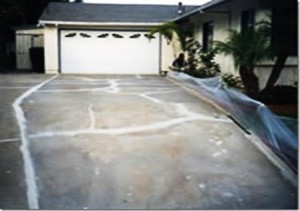 Everyone notices cracks in their driveway. Anthill mounds pop up and weeds sprout out of the crevices. Most driveway cracks are small and considered non-structural, and lessen curb appeal. But cracks with wider openings and heaved edges can be trip hazards and should be repaired.
Everyone notices cracks in their driveway. Anthill mounds pop up and weeds sprout out of the crevices. Most driveway cracks are small and considered non-structural, and lessen curb appeal. But cracks with wider openings and heaved edges can be trip hazards and should be repaired.
Driveways and walkways can crack for several reasons:
- Tree roots can push up under a driveway and cause heaving, but they can also cause cracking and a downward movement of the slab from excessive moisture. Some tree roots displace soil from the area.
- Soil erosion is the slow washing away of soil rainwater flow.
- Excessive weight placed on a driveway slab, especially at outside corners, will cause settlement and cracking. For example, a septic pumping truck with one set of wheels on the slab and the other set on the ground.
- Sinkholes, while rare, do occur in the Osceola County area. Not all sinkholes are as dramatic as the ones in the news that swallow up a house overnight – most start out as a small depression in the soil that grows over time until a collapse occurs.
- Poor site preparation can cause driveway cracking in the first couple of years after construction, typically due to inadequate soil compaction before placing the concrete. (It’s typical for a concrete slab to shrink slightly during the curing process in the first couple of months after it is placed, and most driveways and walkways are scored to encourage the hairline shrinkage cracks to happen in the notched lines, where they are less noticeable.)
There are many products designed for home owners to repair small driveway cracks – from special caulks to hydraulic cement – but sometimes the cracks become more of an eyesore after filling them if the work is sloppy or the surface appearance of the fill material is significantly different than the surrounding concrete.
Larger cracks that are trip hazards can be ground down even with the lower side of the crack by a concrete service. We consider an abrupt change in the surface of more than a half-inch to be a trip hazard. Driveways that have severe cracking will need the damaged area cut out and replaced.
BUY YOUR SIDE believes that regular maintenance of your property helps retains it’s value and your enjoyment of it!
Read More
After years of inspecting homes throughout Osceola County, we have pretty much seen it all! But there are a few conditions that turn up again and again.
At BUY YOUR SIDE we believe that the more you know, the better you can approach the purchase or sale of your property so we’re sharing the most frequently identified issues so you can manage expectations or correct them before they become real – and sometimes really expensive to fix – problems.
Poor Drainage: Inadequate drainage is THE most common problem found by home inspectors. To improve drainage, consider installing a new gutter system of eaves troughs and downspouts or re-grading the lot to better channel water away from the home.
Faulty Wiring: Especially in older homes, we find unsatisfactory and outdated electrical systems to be fairly common. Sub-standard wiring is a dangerous flaw; you may have to replace the entire electrical system – or at least part of it – to bring the property up to today’s safety code.
Leaky Roof: Damaged or older shingles and improper flashings may cause water damage to ceilings and walls. It’s reasonably inexpensive and relatively easy to repair shingles and small amounts of flashing but if the roofing is old, you face a much larger expense to replace the whole thing.
Hazardous Heating System: A heating system that’s been poorly maintained or one that is older can be a serious health and safety hazard. While some winters are warm enough that you rarely use your heat, you still need to repair or replace the old furnace. Replacement is indeed a major expense, but new furnaces are more energy-efficient and likely will save you money in the long-term. If the system is not electrical, install carbon monoxide detectors for added safety.
Overall Poorly Maintained: Poor maintenance includes everything from cracked or peeling paint, crumbling masonry, broken fixtures to shoddy wiring or plumbing. You can easily repaint a wall, replace a fixture, or repair a brick wall, but makeshift electrical or plumbing are serious and potentially dangerous problems. You need to replace faulty wiring and defective pipes.
Minor Structural Damage: While the building is not likely to fall down, you should deal with the structural problems before they become more serious. Such damage is usually caused by water seeping into the foundation, floor joists, rafters or the headers of windows and doors. First, fix the defect (such as a leaky roof) to avoid further harm. Then, repair or replace any damaged area. As always, expense is proportionate to damage: the worse it is; the more costly it will be.
Plumbing problems: 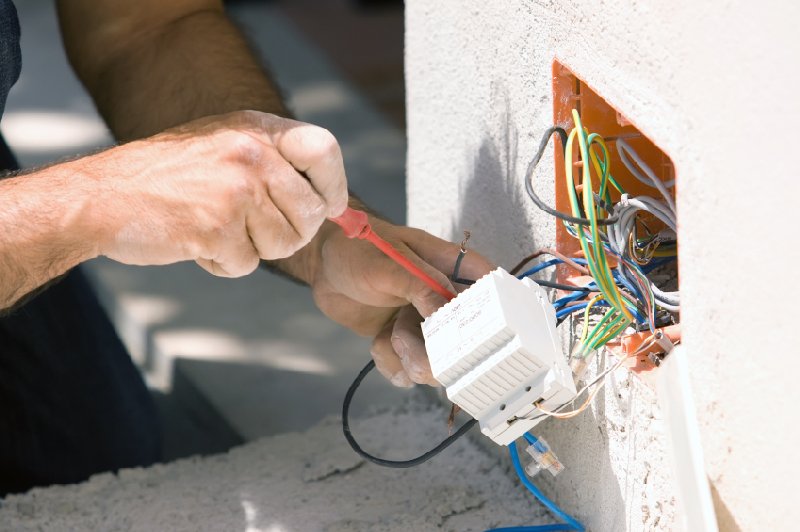 The most common plumbing defects include old and incompatible piping materials and faulty fixtures or waste lines. These may require simple repairs, such as replacing a fixture, or more expensive measures, such as replacing the plumbing system itself.
The most common plumbing defects include old and incompatible piping materials and faulty fixtures or waste lines. These may require simple repairs, such as replacing a fixture, or more expensive measures, such as replacing the plumbing system itself.
Air and Water Intrusion: If the building’s exterior allows in water and air around windows and doors it usually doesn’t indicate a structural problem, but rather poor caulking and weather stripping. Properly sealing windows and doors is inexpensive and relatively simple, and doing so can save you both in your comfort and on your energy bill.
Inadequate Ventilation: Sub-standard ventilation can result in excessive moisture that wreaks havoc on interior walls and structural components as well as allergic reactions. Install ventilation fans in every bathroom, especially if there they have no windows, and regularly open all windows in your home. To repair damage caused by poor ventilation, you may only have to replace drywall and other inexpensive finishes. Replacement of structural elements is more expensive.
A Special Note Regarding Environmental Hazards: Environmental problems comprise a growing list of home defects. These include lead-based paint (common in homes built prior to 1978), asbestos, formaldehyde, moulds and contaminated drinking water. Generally, environmental hazards are not identified in a traditional home or building inspection, so you need to arrange a special inspection to determine what – if any – hazards exist. And, unfortunately, these problems are usually expensive to fix.
BUY YOUR SIDE doesn’t fix or remedy any structural, electrical, plumbing or environmental hazards, so you can be assured that we won’t list conditions in our inspection reports with the hope of profiting later: we’re concerned only with providing you the information you need so you can make the wisest decisions possible.
Read More
 Over 50% of the houses sold in the Orlando market as a whole have been cash deals, according to ZILLOW. ZILLOW’s research attributes most of these sales to investors who’ve purchased homes in typically in poor condition. Generally these houses were bought under market value and renovated to resell quickly – or “flip” – for a profit. Usually, the focus of renovations is interior finishes and fixtures: fresh paint and new flooring, and updates to kitchens and bathrooms. Investors put their money where it shows, and where they expect to get high return on their investment. This sometimes means that they’ve ignored not-so-glamorous, but important components like roofing, HVAC systems, and water heaters. And, to keep their costs down, they often hire handymen to do the work rather than hire licensed contractors. Not all flipper houses are problematic, but potential buyers may find that everything looks great on a walk-through only to have their home inspection reveal costly issues after the sales contract is signed. Here are a few things to look for when going on a walk-through evaluating an investor-renovated house:
Over 50% of the houses sold in the Orlando market as a whole have been cash deals, according to ZILLOW. ZILLOW’s research attributes most of these sales to investors who’ve purchased homes in typically in poor condition. Generally these houses were bought under market value and renovated to resell quickly – or “flip” – for a profit. Usually, the focus of renovations is interior finishes and fixtures: fresh paint and new flooring, and updates to kitchens and bathrooms. Investors put their money where it shows, and where they expect to get high return on their investment. This sometimes means that they’ve ignored not-so-glamorous, but important components like roofing, HVAC systems, and water heaters. And, to keep their costs down, they often hire handymen to do the work rather than hire licensed contractors. Not all flipper houses are problematic, but potential buyers may find that everything looks great on a walk-through only to have their home inspection reveal costly issues after the sales contract is signed. Here are a few things to look for when going on a walk-through evaluating an investor-renovated house:




Follow Us!